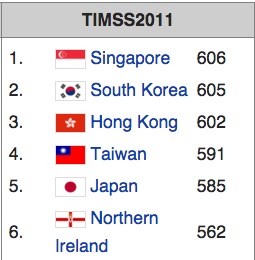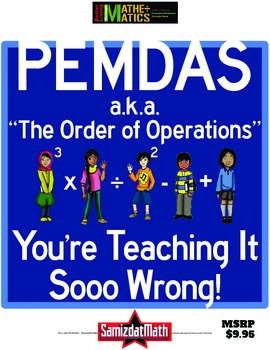
There’s almost 18,0000 versions of “scoot” games on TpT. Robert says you shouldn’t use any of them.
Robert has been selling materials on TeachersPayTeachers for the past few years (he won’t call them “products,” because that’s debasing his “process,” whatever that means….), and one thing has always mystified him:
What’s the deal with “Scoot?”
To those of you who have been living in a cave alongside Donald Trump, the idea of “scoot” is to number a bunch of “task cards,” put one on each student’s desk, and then have them work on the problem for a few minutes, bang a pot, or use some other signal, and send kids on to the next problem. Teachers claim it’s great because it gets the kids to practice and they can move around the room, yadda yadda yadda.

According to Robert, who has only been working in classrooms since like Neolithic times, this is a seriously bad practice, especially with mathematics.
Here be his three reasons:
Scoot sends the wrong messages about mathematics: If you’re wondering why your students can’t perseverate (yes, that’s a real word) with doing a multi-step math problem, it’s because they’ve been playing too much Scoot. Scoot communicates to children that they have to do math fast, like really fast, and then move on to the next problem. This is not what mathematics is all about. Most people who “know” mathematics understand it is an intense discipline which requires careful thought and attention to details. Scoot reinforces the idea that “good” math is “fast” math. Uh huh….
Scoot makes kids anxious: See those kids who look like they’re having fun? Robert tells me that there are a good number who dread playing this game (contrary to their willingness to “go along”), because the pace is so fast that they never get to finish a problem, and those that they hurry through to finish are often wrong. Meanwhile, all around them they see a friend who has finished their card and is waiting for the pot to be banged. Robert fondly remembers being the last one to finish anything in school, and he recalls nothing is more humiliating than watching the kids next to him finish their multiplication tests before him on a very consistent basis. And you wonder why he calls his career in teaching math “a from of revenge…”
Scoot is dumb: Okay, this is easily open to misinterpretation – when Robert use words like “dumb” and “smart” when referencing math activities, he’s talking about “smart” as giving kids the right amount of time and resources to do different levels of challenges, while “dumb” is giving exactly the same amount of time to do exactly the same thing over and over again. Since the rules of scoot demand that each problem be completed in the same amount of time, the types of problems you can give are pretty limited. That’s “dumb.”
Okay, big mouth, what’s your alternative to “Scoot?”
Robert claims he’s never, every used a “scoot” type game in a classroom, and you know what, his students get just as much practice as yours. Nyeh nyeh nyeh nyeh nyeh. Instead, Robert has his kids work on “Fishbowl Problems.” From what I understand, a “fishbowl” is where you create all different types of math problems related to a subject, making some easy and some hard, mix them up in a “fishbowl” (or a hat, or a large jar, or what have you….) and then circulating around the room letting kids take a problem out of the jar. That actually sounds kind of cool – why didn’t my teachers do that when I was growing up?
Here’s the great part: the kids don’t know what problem the other kids are working on, so if Rahim needs 8 minutes to finish a medium challenge problem, he doesn’t get anxious, because he doesn’t know what type of problem Schwarmala or Dobie or Cookiehead is working on. Moreover, he may finish that problem and then move on to a second problem which is pretty easy, knock it out in 3 minutes and then flex his mojo on a third problem. The point here is this: “fishbowl” is “smart” because there are different kinds of problems to work on and nobody get’s anxious, because there isn’t all this time pressure from the bang of a gong. A kid might select a very challenging problem and feel good that she completed that single problem in 20 minutes, while another kid may do 4 different easier problems during the same amount of time.
This all sounds kind of reasonable to me, but the question is, what should a teacher do with the dozens of “scoot” materials he/she has already purchased? Robert told me that if you add some easier and harder problems, they could easily be turned into “fishbowl” exercises.
So listen to Robert’s admonition and please, PLEASE! Stop “scooting” and start “fishbowling.”
Please?





